|
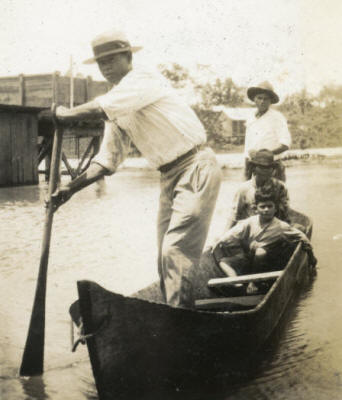 THIS IS THE SECOND PAGE
of documents for the SECOND HALF of 1931
on Nicaragua's Caribbean Coast region in the time
of the Sandino rebellion, housing material dated in the
seven weeks from July 26 to September 11.
THIS IS THE SECOND PAGE
of documents for the SECOND HALF of 1931
on Nicaragua's Caribbean Coast region in the time
of the Sandino rebellion, housing material dated in the
seven weeks from July 26 to September 11.
The Sandinistas’ military probes
into the western fringes of
the Caribbean Coast region continue
through mid & late July, as do the
Guardia’s efforts to repel & chase
them down. Air & ground
battles at Sacklin & Kisalaya on
July 17, 22 & 26 are narrated from a
fascinating mix of perspectives —
including a Marine pilot’s (Becker,
29 July); two Guardia patrol
commanders (Stone, 29 July &
Levonski, 17 Aug), Moravian
missionaries (Haglund, 23 Aug), Area
Commander Col. Wynn’s (11 Aug), and
Gen. Sandino’s (20, 27, 28 & 30 Aug)
— the latter three a highly
revealing never-before-published
series of letters from Sandino to
Col. Perfecto Chavarría & other
prominent, second-tier EDSN officers
that effectively mark the end of
this campaign. Sandino
acknowledges that the expeditionary
column is “mal de salud” & suffering
low morale & grants permission to
return to the General Headquarters
near Guiguilí.
On 11 August, Col. Wynn offers his view of the military
situation: “[The]
groups operating on the outskirts of
this area are operating from the
vicinity of Bocay for the purpose of
obtaining supplies from the places
not under direct Guardia protection;
that the bandits have no immediate
intention of driving into the area
protected by Guardia posts and
patrolling. ..." Sans the
“bandit” epithet it is an apt &
accurate portrayal. One sees
here the EDSN struggling hard to
expand its political & military
control down the Río Coco to
Kisalaya & Sacklin, with a second
prong south & east into the Wuani
and Siuna districts. Successes
are mixed at best. Cultivating
organic connections with the
indigenous social fabric in the
Kisalaya-Sacklin zone proves a
formidable challenge, with the
influence of the Moravian Church,
the Miskitus' cultural valorization
of individual & community autonomy &
independence and their
historically-rooted antipathies
towards “Spaniards” in general, and
the countervailing power of the
Marines & Guardia. EDSN
political successes in the zone,
hard to gauge but evidently real &
substantial, are due mainly to
Adolfo Cockburn & Abraham Rivera’s
oversized energies & influence.
Further south, plundering foreign
properties & eliminating "traitors”
in Wuani & Siuna are made possible
in large part by the district’s
physical impenetrability for the
Guardia upriver from the east,
especially during the rainy season,
as seen in Lt. Stone’s harrowing
patrol report of 29 July.
By early August, after roughly five weeks, the second big
rebel offensive of 1931 is over.
Area Commander Wynn reports no
military contacts after July 26, and
by late August the sick & weary
rebels are heading home.
|
|
PERIOD MAPS
|
|
1894 mosquito
shore

27 MB,
library of congress
|
1920s
Standard Fruit

6.5 mb,
US National archives
|
1928 Rio wanks
Patrol

3 mb, us
national archives
|
1931 Moravian

2.4 mb,
comenius press
|
|
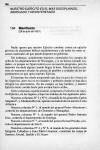
|
1.
28 July 1931.
Manifiesto.
Gen. Augusto C. Sandino, Cuartel
General del EDSNN, p. 1. (Source:
A. C. Sandino, El pensamiento vivo,
Sergio Ramírez, comp. & ed. (Managua:
Nueva Nicaragua, 1984), tomo 2, pág.
186) "... Ocho
columnas expedicionarios componen el
efectivo de nuestro Ejército, en los
lugares y bajo las órdenes de los
siguientes jefes: Nuestras
columnas N° 2 y N° 6, al mando del los
generales Carlos Salgado P. y Abraham
Rivera, operan con todo éxito en nuestra
Costa Atlántica. Nuestra columna
N° 1, al mando del general Pedro
Altamirano, controla los departamentos
de Chontales y Matagalpa ..."
|
|
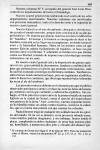
|
2.
28 July 1931.
Manifiesto.
Gen. Augusto C. Sandino, Cuartel
General del EDSNN, p. 2.
(Source:
Sandino, El pensamiento vivo,
tomo 2, pág. 187)
|
|
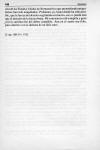
|
3.
28 July 1931.
Manifiesto.
Gen. Augusto C. Sandino, Cuartel
General del EDSNN, p. 3.
(Source:
Sandino, El pensamiento vivo,
tomo 2, pág. 188)
|
|
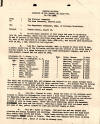
|
1.
29 July 1931.
Patrol Report, District Commander
1st Lt. W. J.
Stone, El Gallo, District of Rio
Grande, to Area Commander Col. C. A.
Wynn, p. 1.
"GUARDIA NACIONAL
¶ DISTRICT OF RIO GRANDE, EL GALLO NIC.
¶ 29 July 1931 ¶ From: The District
Commander ¶ To: The Area Commander,
Eastern Area. ¶ Via: The Department
Commander, Dept. of Southern Bluefields.
¶ Subject: Combat Patrol, report of. ¶
1. As the radio operator of this place
had gone to Bluefields July 18; your
message, dated July 18, containing
orders for a combat patrol of 20 men to
proceed to the Wuani and Siuna area; was
not received until 1100 Jul 20, when it
was delivered by 1st. Sgt. Dash, #960,
G.N., who arrived from Bluefields with
12 men, 1 BAR, ammunition and supplies.
¶ 2. July 21---Leaving 1st. Sgt. Dash in
charge El Gallo with 15 men; a patrol
consisting of the following officers and
men crossed to the north bank of the Rio
Grande in a barge belonging to the Cukra
Development Company, and with 3 pack
animals cleared for the north at 0745.
1st. Lieut. W.J. Stone, G.N. Raso Irias,
Erasmo #2343 ¶ 2nd. Lieut. Juan B.
Rodriguez, G.N. Raso Martinez, Alejandro
#2131 ¶ Sgt. Garth, Kinzeano #2702 Raso
Martinez, Eulalio #646 ¶ Sgt. Garcia,
Augustin #2318 Raso Noguero, Eliseo
#1990 ¶ Raso Ampie, Francisco #2587 Raso
Ordenana, Saniago #3441 ¶ Raso Brock,
Cecil #2996 Raso Padilla, Espinallo
#2322 ¶ Raso Calderon, Alejandro #3472
Raso Rigfby, James #4585 ¶ Raso Davila,
Lucas #2191 Raso Roboteau, Renaldo #2968
¶ Raso Diaz, Manuel #4501 Raso Tejada,
Maximo #3033 ¶ Raso Grey, Mitchell #2847
Raso Wilson, Eddinton #2180 ¶ Raso
Haymen, Luis #4510 Raso Vargas, Wilfred
#2418 ¶ The trail was exceedingly bad,
and progress was delayed at the larger
streams where the mules had to be
unpacked and the cargo carried over. The
animals fell in several of the smaller
streams when attempts were made to cross
without unpacking, and had to be fished
out. Arrived at the savannas, which is
about two thirds of the distance to the
Prinzapolca river, at 2045 and camped. ¶
3. July 22—Cleared at 0745. Found the
trail in the savannahs good. Planned to
reach the Prinzapolca river about 1 mile
below Tungla, but arriving at the
Yapaunda creek and finding it highly
dangerous, changed direction and arrived
at river about 10 miles below Tungla at
1230. More delay in securing boats.
Cleared at 1500 in three boats. After
two hours paddling, patrol disembarked,
made camp and had dinner. Securing a
large boat with outboard motor and crew
of two, patrol cleared at 1930 and
arrived Tungla at 2145. ¶ 4. July
23---Spent in Tungla. Had good sun and
men worked hard cleaning and drying
equipment and clothing. Provisions which
were wet from first days travel were
sorted and dried. Could learn nothing
new about movements of Bandits from
people in Tungla. They said that Bandits
were still in Siuna and Wuani about
13th, which of course we already knew.
[...]"
|
|
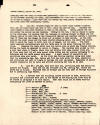
|
2.
29 July 1931.
Patrol Report, District Commander
1st Lt. W. J.
Stone, El Gallo, District of Rio
Grande, to Area Commander Col. C. A.
Wynn, p. 2.
"[...] (2) ¶
Combat Patrol; report of, cont. ¶
Learning that the trail to Siuna was
practically impassable because of high
waters in the streams crossing the
trail, and furthermore as thee were no
pack animals to be had in Tungla; (mine
were left the second day when patrol
embarked on river) the river route was
necessarily chosen. ¶ 5. July 24---
Cleared Tungla at 0600 in three boats
lashed together with one outboard motor
and crew of two…motor man and bow man.
Guardias who could handle a pole were
detailed to help in the rapids. Having
passed one bad run safely the second one
was tackled. Riding in the bow, I had no
chance to speak to the motorman; but
knowing that his business is hauling
freight to Wuani for the Chinos, and as
he said that he had transported Marines
and Guardias before; I believed that if
there was any danger he would put us
ashore to walk around. As the bows
entered the worst place and the boats
started shipping water, the motor was
slowed down to allow the boats to drift
back out of danger, but too late. The
three boats capsized instantaneously and
all hands were in the water fighting for
their lives. Grasping the boats which
were now bottom side up shore was
finally reached. Righting the boats we
embarked to return to Tungla. Two
Guardias were picked up from a sand bank
close to Tungla, where they had drifted
with some blanket rolls etc. No lives
were lost but all arms except three
rifles and two pistols belonging to Lt.
Rodriguez and the Lewis gunner were
gone. A small amount of ammunition and
provisions were also saved. As the river
was falling rapidly; being much lower
than the preceeding day; Sgt. Garcia and
four men were given the arms, ammunition
and provisions and left in Tungla to
salvage the lost equipment. Remainder of
patrol cleared immediately for El Gallo
and arrived following day July 25 at
1300. ¶ 6. July 26—1st. Sgt. Dash with
four men, provisions, arms and
ammunition cleared for Tungla. Dash and
one man returned July 28, leaving Sgt.
Garcia and seven men in Tungla. Reported
that no attempt had yet been made to
salvage equipment due to prevailing high
waters. ¶ 7. I certify that the
following listed articles of arms,
ammunition, equipment and provisions
were lost in the rapids of the
Prinzapolca river July 24 as stated in
paragraph 5 of this report. That they
could not be saved without endangering
the lives of members of patrol. ARMS ¶ 1
Machine gun, Lewis #17491, ¶ 2 Boxes,
drum, LMG., ¶ 8 Drums, Ammun., LMG, ¶ 1
Sub-machine gun, Thomson #7303 , ¶ 2
Drums, ammun., Thomson, 3 Magazines,
ammun. Thomson ¶ 1 Belt, 1 pouch drum, 1
pouch magazine, Thomson, ¶ 16 Rifles,
Springfield (krag) M-1898, with slings,
#273775, 411976, 226142, 263186, 141564,
214730, 461110, 224580? Martinez
Eulalio, 464772, 85446, 290180,.. Rifles
belonging to Sgt. Garcia, Augustin;
Rasos Grey, Mitchell; Vargas, Wilfred;
Ordenana, Santiago are unknown. Also
number of rifle belonging to Raso
Martinez, Eulalio is not known to be
correct . Record books will show. [...]"
|
|
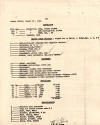
|
3.
29 July 1931.
Patrol Report, District Commander
1st Lt. W. J.
Stone, El Gallo, District of Rio
Grande, to Area Commander Col. C. A.
Wynn, p. 3.
"[...] (3) ¶
Combat Patrol; report of, cont. ¶
AMMUNITION ¶ 1700 rds. Ammunition, krag,
combat M-1898, ¶ 975 rds. Ammun., LMG.
(Springfield) M-1906,¶ 300 rds. Ammun.
TSMG. Cal. .45, ¶ 7 Grenades, hand ¶
MARINE CORPS PROPERTY (signed for by
Walter J. Stone, Sgt. U.S.M.C. ¶ 1 Belt,
pistol, web complete with magazine
carrier, ¶ 1 Haversack, N.C.O., ¶ 1
Holster, pistol, russet, ¶ 1 package,
first aid, ¶ 1 Pouch, fist aid, ¶ 1
Suspenders, pistol belt, prs. , ¶ 1
Pistol, colt, automatic, cal., 45
#202440 ¶ EQUIPMENT ¶ 17 Belts,
cartridge, ¶ 17 Packages and pouches,
first aid, ¶ 19 Haversack, ¶ 18
Bayonets, M-1989, with scabbards, ¶ 15
Canteens, Cups canteen and covers
canteen, ¶ 18 Pans, meat with knives,
forks and spoons, ¶ 1 Blanket, cotton
belonging to Raso Alejandro Calderon
#3473, ¶ 1 Poncho, belonging to Raso
Alejandro Calderon #3472. ¶ PROVISIONS
120 lbs. rice @ $0.034 = $4.08 ¶ 75 lbs.
Beans @ 0.059 = 4.43 ¶ 40 lbs. flour @
0.034 = 1.36 ¶ 5 lbs. Salt @ 0.025 = .38
¶ 25 lbs. Sugar @ 0.05 = 1.25 ¶ 10 lbs.
Coffee @ 0.199 = 1.99 ¶ 15 tin Tomatoes
@ 0.09 = 1.35 ¶ Total $14.84 ¶
MISCELLANEOUS ¶ 2 machetes with
scabbards, ¶ 1 Copy air Ground Liaison
code #4, ¶ 2 Flys, tent, small, ¶ 2
Buckets, galvanized, 8 qt, ¶ 2 Pans,
frying, small, ¶ 1 Boiler, enamel,
large, ¶ 2 Spoons, kitchen, large, ¶ 1
Basin, wash, enamel ¶ (signed) W. J.
Stone [...]"
|
|
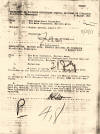
|
4.
29 July 1931.
Patrol Report, District Commander
1st Lt. W. J.
Stone, El Gallo, District of Rio
Grande, to Area Commander Col. C. A.
Wynn, p. 4.
"[...] DEPARTMENT
OF SOUTHERN BLUEFIELDS GUARDIA NACIONAL
DE NICARAGUA ¶ Bluefields, Nicaragua. 3
August 1931 ¶ From: The Department
Commander. ¶ To: The Area Commander,
Eastern Area. ¶ Subject: Combat patrol,
report of. ¶ 1. Forwarded. (¶ signed)
C.A. DAVIS ¶ 2nd endorsement
HEADQUARTERS, EASTERN AREA, GUARDIA
NACIONALDE NICARAGUA ¶ Bluefields,
Nicaragua. 3 August 1931 ¶ From : The
Area Commander, Eastern Area. ¶ To: The
Jefe Director, Headquarters Guardia
Nacional de Nicaragua, Managua,
Nicaragua. ¶ 1. Forwarded. ¶ 2. A board
of survey will be ordered by the Area
Commander on the Guardia property lost
on this patrol. ¶ 3. It is recommended
that the Marine Corps property on charge
to First Sergeant Walter J. Stone, USMC
be also surveyed. ¶ 4. Lieutenant Stone
has been directed to furnish further
information regarding the loss of
air-ground Liaison Code Card #4;
whether, in his opinion it was destroyed
or merely lost. This information will be
furnished the Jefe Director as soon as
received. ¶ (signed) C. A. WYNN"
|
|
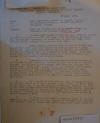
|
29 July
1931.
Report of contact with enemy forces at
Saclin, Nicaragua, on the morning of
July 22, 1931,
1st Lt. Herbert P. Becker,
Aircraft Squadrons, Managua, to
Commanding Officer Aircraft Squadrons
Francis P. Mulcahy, Managua, p. 1.
[NOTE: For the
corresponding account of Sgt. Gordon W.
Heritage, whose plane was damaged &
downed in this incident & who slogged
with his co-pilot for days through
swamps & jungles before being rescued,
published in
The Leatherneck in
May 1932, see
ATL-DOCS 1932A, PAGE 4.
]
"UNITED STATES MARINE CORPS ¶
HEADQUARTERS, AIRCRAFT SQUADRONS, 2d.
MARINE BRIGADE, ¶ MANAGUA, NICARAGUA. ¶
29 July, 1931. ¶ From: First Lieutenant
Herbert P. Becker, U.S.M.C. ¶ o: The
Commanding Officer, Aircraft Squadrons,
2d Marine Brigade. ¶ Subject: Report of
contact with enemy forces at Saclin,
Nicaragua, on morning of July 22, 1931.
¶ 1. At 0815 Staff Sergeant Heritage
with Corporal Simmons as observer in
OL-8 No. 7837 and myself with Lieutenant
Peterson, G.N. and Private Rosenberg, as
observers, in OL-8 No. 7835, took off
from Puerto Cabezas to patrol the Coco
River. ¶ 2. While passing over the town
of Saclin at 0915 both planes were fired
upon with rifles and machine guns by a
group of bandits. All bombs were dropped
and all ammunition carried for the
sub-Thompson guns was expended by both
planes. Hits with bombs were scored in
the bandit group, in a group of horses
belonging to the bandits, and several
houses. ¶ 3. Outstanding was the
accuracy and effectiveness of the
bombing of Sgt. Heritage, and the
machine gun fire of corporal Simmons.
Out of nine bombs dropped, Sgt. Heritage
obtained two direct hits. These hits,
together with the accurate Sub-Thompson
machine gun fire of Cpl. Simmons,
silenced one group of guns, killed
several men, and discouraged the
remaining bandit group to such extent as
to cause them to withdraw up the river
thereby permitting the safe entry of the
town by a Guardia patrol several days
later. ¶ 4. As a result of this contact,
Sgt. Heritage’s plane was struck a total
of at least sixteen times, which, at
0945, while on the return trip to Puerto
Cabezas, forced Sgt. Heritage to make an
emergency landing about four or five
miles from Saclin. Because of the
impossibility of removing the plane, due
to terrain difficulties, I directed Sgt.
Heritage to burn his plane and return to
Puerto Cabezas on foot. ¶ 5. In
returning to Puerto Cabezas on foot, it
was necessary for Sgt. Heritage and Cpl.
Simmons to traverse most unfavorable
terrain. Due to recent heavy rains, they
were forced to… ¶ -1- [...] "
|
|

|
29 July
1931.
Report of contact with enemy forces at
Saclin, Nicaragua, on the morning of
July 22, 1931,
1st Lt. Herbert P. Becker,
Aircraft Squadrons, Managua, to
Commanding Officer Aircraft Squadrons
Francis P. Mulcahy, Managua, p. 2.
"[...] swim five,
swollen, treacherous rivers and wade
across approximately ten miles of swamp
land. It is my opinion that it was only
through the excellent leadership and
judgment used by Sgt. Heritage and the
willing cooperation of Cpl. Simmons that
the two men were able to make the return
trip to Puerto Cabezas. ¶ 6. I landed at
Puerto Cabezas at 1030. There were two
bullet holes in my plane. ¶ 7. During
the engagement 18 bombs were dropped and
100 rounds of .45 caliber ammunition
were fired. ¶ H.P. BECKER"
|
|
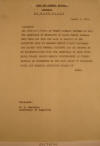
|
1 August
1931.
Telegram from US
Minister Matthew Hanna, Managua,
to Comsperon.
"COPY FOR GENERAL
MATTHEWS ¶ TELEGRAM ¶ BY NAVY RADIO ¶
August 1, 1931. COMSPERON ¶ THE AMERICAN
CONSUL AT PUERTO CABEZAS INFORMS ME THAT
THE ASHEVILLE IS PREPARING TO LEAVE
PUERTO CABEZAS NEXT WEEK AND THAT THE
DATE OF ARRIVAL OF THE RELIEVING SHIP IS
UNKNOWN PERIOD I HAVE DISCUSSED THE
MATTER WITH GENERAL MATTHEWS AND HE
CONCURS IN MY RECOMMENDATION THAT THE
AHSEVILLE OR SOME OTHER NAVAL VESSEL
SHOULD REMAIN CONTINUOUSLY AT PUERTO
CABEZAS OR ELSEWHERE ON THE EAST COAST
OF NICARAGUA UNTIL THE PRESENT SITUATION
CLEARS UP ¶ HANNA"
|
|
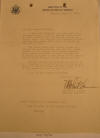
|
3 August
1931.
Letter from US
Minister Matthew Hanna, Managua,
to Gen. C. B. Matthews, Jefe Director
GN, Managua.
"Managua, August
3, 1931. ¶ My dear General Matthews: ¶ I
have just received a telegram from the
American Consul at Puerto Cabezas dated
August 2, 1931, stating that the
Levonski patrol returned there July 31s
and that Levonski states that he found
seven dead bandits at Saklin on the 26th
of July. ¶ The Consul adds that various
rumors are current in Puerto Cabezas,
and that Mr. Scott, manager of the
Bragman Bluff Lumber Company, wants
planes stationed in Puerto Cabezas and
is making a request in this sense to the
Department of State through his New
Orleans office. ¶ General Bradman has
informed me that he is now investigating
this matter of stationing airplanes at
Puerto Cabezas and will confer with me
in this connection in the next day or
so. ¶ I am, my dear General Matthews, ¶
Sincerely yours, (signed) Matthew E.
Hanna American Minister. ¶ Major General
C.B. Matthews, G.N., ¶ J efe Director of
the Guardia Nacional, Managua."
|
|
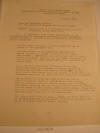
|
1.
4 August 1931.
Recommendations in Connection with
Projected Operations on the East Coast.
Commanding Officer Aircraft Squadrons
Francis P.
Mulcahy, Managua, to Commanding
General 2nd Brigade, Managua, p. 1.
"UNITED STATES
MARINE CORPS ¶ HEADQUARTERS AIRCRAFT
SQUADRONS 2nd MARINE BRIGADE ¶ MANAGUA,
NICARAGUA. ¶ 4 August, 1931. ¶ From the
Commanding Officer. ¶ To: The Commanding
General, 2nd Marine Brigade. ¶ Subject:
Recommendations in connection with
projected operations on the East Coast.
¶ 1. In compliance with verbal
instructions of the Commanding General
concerning continuous aerial operations
against outlaws on the East Coast of
Nicaragua, the following is submitted: ¶
(a) This work could only be accomplished
by use of planes of the amphibian type;
¶ (b) Four planes of the amphibian type
would be needed in order to assure a
patrol of two planes when needed.
Obviously, all patrolling must be done
in pairs. At present there is but one
OL-S (amphibian) at this station. The
RS-3 (amphibian) is not suitable for
combat work. (c) A separate detachment
of three officer and thirty men would be
necessary at Puerto Cabezas to operate
and maintain four OL8s in patrol work on
the East Coast. This number does not
include a guard, but only personnel
necessary for operation and maintenance
of planes. (d) Buildings to house and
feed thirty men and to protect material
would be needed. There is at present
near the flying field at Puerto Cabezas
one storeroom, one office building and
one hangar formerly used by Marines but
now owned by the Bragman Bluff Lumber
Company. These buildings would require
repairs and, in addition, one barracks
and one mess hall would have to be
constructed. (e) Spare parts such as
wings, tanks, etc would have to be
shipped from the United Sates to provide
emergency repairs to planes based in
Puerto Cabezas; -1- [...]"
|
|
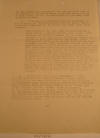
|
2.
4 August 1931.
Recommendations in Connection with
Projected Operations on the East Coast.
Commanding Officer Aircraft Squadrons
Francis P.
Mulcahy, Managua, to Commanding
2nd Brigade, Managua, p. 2.
"[...] (f) Two
trucks and a motorcycle with side car
would have to be shipped from the United
Sates to provide transportation of mess
stores, etc for the maintenance of
personnel based in Puerto Cabezas. ¶ 2.
With regard to statements made in
paragraphs 1a and 1b above, the
following extract from the annual report
of Aircraft Squadrons for the fiscal
year 1927 – 1928 is of interest: ¶ “The
terrain of the East Coast is
characterized by dense jungles, tropical
forests, deep rivers, large lagoons and
extensive swamps. The percentage of
dangerous flying days due to treacherous
weather conditions is high. For Leoning
Amphibians, three officers and twenty
seven men were supplied and based in
Puerto Cabezas. This detachment has and
still is rendering most valuable
services in connection with the East
Coast operations. The air missions
performed there are similar to those
carried out on this Coast. Several
harrowing experiences undergone by the
pilots of that detachment have more than
justified the wisdom of employing planes
of the amphibian type in that country.
On a recent flight the leader’s plane
was twice forced down by sudden tropical
storms and the escort plane was lost in
the jungles for three days. Both finally
returned safely, whereas had they been
flying land planes it is probable that
the loss of both of the ships and crews
would probably have occurred.” ¶ 3. At
the time that an air detachment of OL-8
of these Squadrons was based on Puerto
Cabezas, combat patrols of Marines were
stationed at the following places in the
Eastern Area: Puerto Cabezas,
Bluefields, Prinzapolka, Cabo Gracias a
Dios, El Gallo, Casuli, La Luz Mines,
Eden Mines, Neptune, Waspuck, Poteca,
Bocay and Darrabo. At the present time
most Guardia combat patrols and stations
in the Eastern area are located along
the coast. Planes in the eastern area
would be of little military value,
except along the coast, unless they have
ground patrols in constant cooperation
with them. ¶ -2- [...]"
|
|
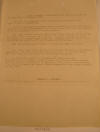
|
3.
4 August 1931.
Recommendations in Connection with
Projected Operations on the East Coast.
Commanding Officer Aircraft Squadrons
Francis P.
Mulcahy, Managua, to Commanding
General 2nd Brigade, Managua, p. 3.
"[...] 4. After a
careful consideration of all factors of
the problem, the undersigned finds: ¶
(a) that all airplane combat patrolling
on the EasT Coast must be done by
amphibians. ¶ (b) That continuous
airplane combat patrolling on the East
Coast could not be done from Managua,
but would necessitate the establishment
of an air detachment base on Puerto
Cabezas. ¶ (c) That, unless there are
sufficient ground patrols in the field
to contInuously cooperate with planes,
the establishment of an air detachment
on the East Coast would be a needless
expenditure of funds and effort and
would be of very little military value.
¶ 5. The undersigned therefore
recommends that this time: ¶ (a) That,
until this station is furnished
additional observation amphibians, no
land observation planes be sent to the
East Coast for combat patrol duty except
in the gravest emergency. ¶ (b) That
when sufficient observation amphibians
are received at this station, combat
patrols be furnished from Managua and
that these be restricted to occasions
when planes in operations from Puerto
Cabezas may expect close cooperation
from ground patrols in the field. ¶
FRANCIS P. MULCAHY"
|
|
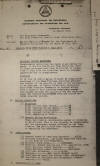
|
11 August
1931.
Monthly Record of Events for the
Department of Southern Bluefields for
the Month of July 1931,
1st Lt. C. A.
Davis, Bluefields, to Col. C. A.
Wynn, Bluefields, p. 1.
"
"11 August 1931. ¶ From: The Department
Commander. ¶ To: The Area Commander,
Eastern Area, Bluefields, Nic., ¶
Subject: Monthly Record of Events for
the Department of Southern Bluefields
for the month of July 1931. A. PERIOD :
From 0000 Tuesday 1 July 1931.¶ MILITARY
DUTIES PERFORMED ¶ Considerable
patrolling has taken place during the
month in the Rio Grande and Rama
Districts. Both of these garrisons have
been reinforced to enable them to cope
with the situation which is somewhat
aggravated due to unemployment. ¶
CONTACTS ¶ On 19 July at 2000 a group of
about 25 disgruntled employees of the
Rama-Tipitapa carretera attacked the
cuartel of the Guardia at Rama at the
instigation, it is reported, of Pedron
Altamirano, Lieutenant Fred Riewe
District Commander in counter attack
with a force of four Guardias completely
routed the outlaws killing two, wounding
two and capturing nine. The Guardia
casualties were one killed and three
slightly wounded. ¶ D. POLICE OPERATIONS
(1) Prisoners: ¶ total on hand last
report…22 ¶ Total confined during
month…49 ¶ total released during month …
42 ¶ Total escaped during month… 00 ¶
Total remaining on hand … 36 ¶ (2)
General Police Conditions . ¶ There have
been a considerable number of robberies
in Bluefields. This is due directly to
unemployment and the consequent hunger
suffered by the inhabitants. The police
have been highly successful in capturing
the offenders. E. INTELLIGENCE. ¶ (1)
General state of territory
occupied….QUIET. ¶ (2) Military
Situation…No known organized banditry in
the area of this Department. ¶ (3)
Economic conditions….DEPRESSED. ¶ (4)
Friction between Guardia and Civil
population…NONE. Civil attitude toward
Guardia---GOOD. Press attitude towards
Guardia----FAVORABLE. ¶ (5) Political
situation.-----QUIET. ¶ (6)
Weather-----WET – HEAVY SHOWERS DAILY. ¶
(7) Condition of roads and trails ---WET
– NOT PASSABLE. ¶ (8) Condition of
telephone and telegraphic
communications.----FAIR. ¶ F.
CONFISCATION OF ARMS. [...]"
|
|

|
11 August
1931.
Monthly Record of Events for the
Department of Southern Bluefields for
the Month of July 1931,
1st Lt. C. A.
Davis, Bluefields, to Col. C. A.
Wynn, Bluefields, p. 2.
"[...]
G. TRAINING ¶ Training and instruction
carried out according to the prescribed
schedule except during the period 19-25
July while the Bluefields garrison was
reduced to only a sufficient number of
men for guard and overhead. The training
program was carried out by the Districts
according to schedule except when as
reduced by reason of sending out patrols
to render it impracticable. ¶ H.
MISCELLANEOUS. ¶ None. ¶ (signed) C. A.
DAVIS ¶ 1st endorsement ¶ HEADQUARTERS
EASTERN AREA. GUARDIA NACIONAL DE
NICARAGUA ¶ Bluefields Nic., 11 August
1931. ¶ From The Area Commander. ¶ To:
The Jefe Director, Guardia Nacional de
Nicaragua, Managua, Nicaragua. ¶ 1.
Forwarded. ¶ Signed C. A. WYNN'
|
|

|
11 August
1931.
Record of Events, Eastern Area, July
1931, Col. C. A.
Wynn, Bluefields, to Jefe
Director GN, Managua, p. 1.
"... C. MILITARY
OPERATIONS (Contd). ¶ 3. Contacts:
¶ July 17 - Capt Inman, Lts
Stephenson & Rodrigues in contact with
large group of well armed bandits at
Kisalaya on Rio Coco. Bandit
casualties: 3 killed, number of
wounded not known. Guardia
casualties: Lt Montenegro wounded
in both arms. After three contacts
bandits scattered and fled; patrol retd
to Cabo Gracias. ¶ ... July
26 - Lt Levonski & Lt Stephenson & 20
enl in contact with group of armed
bandits at Saklin on Rio Coco.
Bandit casualties: 2 killed,
number of wounded not known.
Guardia casualties: None. ...
¶ ... General state of territory
occupied: Bandit groups have been
operating in the northern and
northwestern edges of this area,
principally for the purpose of obtaining
loot. Groups were dispersed in two
contacts along the Coco River and an
attack on Rama was repulsed. ... Wuani
and Siuna were looted by a bandit group;
but efforts to operate against this
group proved unsuccessful due to high
water in the rivers. ¶ 2.
Military Situation: It is believed
that the groups operating on the
outskirts of this area are operating
from the vicinity of Bocay for the
purpose of obtaining supplies from the
places not under direct Guardia
protection; that the bandits have no
immediate intention of driving into the
area protected by Guardia posts and
patrolling. ..."
|
|
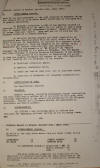
|
11 August
1931.
Record of Events, Eastern Area, July
1931, Col. C. A.
Wynn, Bluefields, to Jefe
Director GN, Managua, p. 2.
"H.
MISCELLANEOUS: (a) CIVICOS -
The following units of civicos are
available for emergency military service
in the following towns: ¶ El
Gallo is the only place where they are
under formal Civico Contract:- ¶
BLUEFIELDS - 65 ¶ PUERTO
CABEZAS - 50 ¶ EL GALLO - 17
¶ NEPTUNE MINE - 30 ¶
(b) MUNICIPAL GUARDIA:-
Bluefields - 12 ¶ Puerto
Cabezazas - 10 ¶ Rama - 3
¶ ...All public officials of this
Area show a desire to cooperate with the
Guardia."
|
|
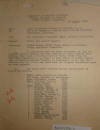
|
1.
17 August 1931.
Patrol and contact report,
1st Lt. Charles
J. Levonski, Puerto Cabezas, to
Col. C. A. Wynn, Bluefields, p. 1.
"DEPARTMENT OF
NORTHERN BLUEFIELDS ¶ GUARDIA NACIONAL
DE NICARGUA ¶ PUETO CABEZAS, NICARAGUA.
¶ 17 August, 1931. ¶ From: First
Lieutenant Charles j. Levonski, G.N. ¶
To: The Area Commander, Eastern Area,
Guardia Nacional, Bluefields, Nicaragua.
¶ Via: The Department Commander, Dept.
Northern Bluefields. ¶ Subject: Patrol
and contact report. ¶ Reference: Verbal
Orders, First Lieut. Robert L. Peterson,
acting Department Commander. ¶ 1. In
accordance with the above referenced, on
July 20, I cleared Puerto Cabezas, for
Cabo Gracias by plane. Arrived Cabo
Gracias, where upon my arrival received
verbal orders from the Department
Commander,(O.A. Inman) to take charge of
patrol consisting of Second Lieutenant
Theodore M. Stephenson, G.N. and (20)
enlisted men. The patrol was armed with
two Thompson Sub-machine guns and hand
grenades. ¶ 2. The below named Officers
and men participated in patrol and
contact. ¶ First Lieut. Charles J.
Levonski ¶ 2nd Lieut. Theodore M.
Stephenson ¶ Sgt. GUATEMALA, Lazaro
#3557 ¶ Cabo. AGUIRREZ, Jose Z. #3310 ¶
Cabo DURAN, Pedro #3425 Raso. BALLES,
Abram #3658 Raso BUCARDO, Rafael #3183
Raso CUBILLO, Joaquin E. #3670 ¶ Raso
FLOREZ, Fernando #3426 ¶ Raso FRANCISCO,
Carlos V. #3512 ¶ Raso FLETES, Justino
#3362 ¶ Raso HARVEY, Armando T. #3746 ¶
Raso LOPEZ, Pedro G. #3173 ¶ Raso PEREZ,
Eduardo #2305 ¶ Raso PINOCH, Levi #4281
¶ Raso RIOS, Narciso #1474 ¶ Raso
ROSALES, Rafael #2214 ¶ Raso RUIZ,
Manuel #2682 ¶ Raso SEAS, Manuel #3487 ¶
Raso VELASQUEZ, Guillermo #322 ¶ Raso
ZAMORA, Salome R. #2721 ¶ Raso ZEPEDA,
Julian. #2259 [...]"
|
|

|
2.
17 August 1931.
Patrol and contact report,
1st Lt. Charles
J. Levonski, Puerto Cabezas, to
Col. C. A. Wynn, Bluefields, p. 2.
"[...] -2- ¶
PATROL AND CONTACT REPORT (CONTINUED). ¶
21 July Spent the day in Cabo Gracias
repairing and getting ready boats for
patrol up the Wanks river. Heavy rain
throughout the day. ¶ 22 July Received
information from a Mosquito Indian that
a small group of Bandits (Jefe unknown)
were operating on the Wanks river about
(20) miles from Cabo Gracias.
Immediately cleared with (10) enlisted
in an outboard motor-boat to reconnoiter
vicinity in which Bandits were reported.
Patrolled to a point about (30) miles up
the river encountered no bandits and
gained no information. Patrol returned
to Cabo Gracias. ¶ 23 July Received five
(5) drums of gasoline and one drum of
oil from Puerto Cabezas but unable to
clear for Saklin on the Wanks due to
engine trouble in motor launch
“Baldwin”. Very heavy rains throughout
the day, both banks of the river
submerged under ten feet of water,
impossible to make foot patrol. ¶ 24
July Cleared Cabo Gracias with Lieut.
Stephenson and (20) enlisted men in
motor launch “Baldwin” and an outboard
motor-boat. The outboard motor-boat was
taken along for the purpose of using it
as a point in view of its being easily
handled in the event of an ambush or
contact on the river. Progress up the
river was very slow and dangerous due to
swift current which carried large logs
and other driftwood. At 1730 arrived and
made camp at Riska, about (20) miles up
the Wanks river. Heavy rains continue. ¶
25 July Cleared Riska at 0630, arrived
Sawa Boom at 1640, spent the night at
this place. Observed several Squas on
rive fishing. Strange to relate no men
were seen on the river this day. No
change in weather. ¶ 26 July Cleared
Sawa boom at 0500 proceeding toward
Andres. At Andres gained information
that Bandits were reported to be in
vicinity between Saklin and Kisalaya.
Strength of bandit group unknown. At
1620 planes dropped message for my
patrol to be on the alert as Saklin and
vicinity was thick with bandits. At
about 1700 when within three hundred
yards of Saklin which is situated on the
South side of the river several
scattered shots were fired from the
brush by the bandits. Bandit fire not
effective. Guardia returned fire from
boats, firing about twenty rounds each
before landing was made. Our landing was
covered by machine-gun fire from planes.
Upon landing a thorough search was made
of Saklin and vicinity, discovering the
bodies of (2) bandits clad in khaki
shirts and trousers, shoes and black
felt hats. A muzzle loader shotgun and a
small quantity of powder and shot was
found beside one of the bodies, the
other wore a cutacha strapped to his
belt. It is not known as to whether the
two bandits were killed by fire from
patrol or planes. [...]"
|
|
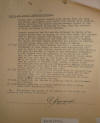
|
3.
17 August 1931.
Patrol and contact report,
1st Lt. Charles
J. Levonski, Puerto Cabezas, to
Col. C. A. Wynn, Bluefields, p. 3.
"[...] -3- ¶
PATROL AND CONTACT REPORT (CONTINUED). ¶
Planes kept a constant contact with
patrol from the time the patrol was
sighted until after the contact with
bandits. Before returning the planes
dropped message signed by the Department
Commander to proceed to Kum, from Kum
overland to Sandy Bay hence to Puerto
Cabezas. ¶ Several women and two old men
who returned to Saklin after contact
stated that on morning of July 26th
about (60) bandits were in Saklin,
bandit Jefe unknown. At noon half of
this group left for Waspook and the
remainder stayed in Saklin The planes
did much toward assisting the Guardia in
scattering this group. Made camp for the
night at Saklin. ¶ 27 July Cleared
Saklin at 0620, arrived Kum 0900, I
directed Lieut. Stephenson to take
charge of seven sick Guardias and
proceed by boat to Cabo Gracias, hence
by boat to Puerto Cabezas, and upon his
arrival to report to the Department
Commander. I then cleared with the
remainder of my patrol for Sandy Bay, At
1830 arrived at Wani, located about (20)
miles south east of Kum, made camp at
this place. The terrain over which the
patrol hiked was for most part under
water anywhere from six inches to
shoulder high, caused by heavy rains and
overflow from rivers and streams, making
hiking conditions very difficult. Even
under these trying conditions the spirit
of all members of the patrol was high. ¶
28 July Cleared Wani at 0615 in five
Pitpans which we procured from the
natives of this village. Arrived at
Sandy Bay at 3200 and made camp. The
trip was uneventful, and the route
covered quiet. No human habitations
encountered enroute. Heavy downpour
throughout the day. ¶ 29 July At Sandy
Bay, day devoted to cleaning rifles,
accoutrements and resting. ¶ 30 July
Cleared Sandy Bay for Puerto Cabezas at
0540 in Sloop “Arco Iris” arriving at
1430. ¶ 3. The conduct and spirit of all
members of the patrol was excellent and
worthy of mention. ¶ (signed) C. J.
LEVONSKI [...]"
|
|
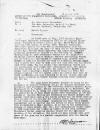
|
4.
17 August 1931.
Patrol and contact report,
1st Lt. Charles
J. Levonski, Puerto Cabezas, to
Col. C. A. Wynn, Bluefields, p. 4.
"[...] 1st
Endorsement 20 August 1931 ¶ OFFICE OF
THE DEPARTMENT COMANDER, DEPARTMENT OF
NORTHERN BLUEFIELDS, ¶ PUERTO CABEZAS,
NICARAGUA ¶ From: The Department
Commander. ¶ To: The Area Commander,
Area of the East, Guardia Nacional,
Bluefields, Nic. ¶ Subject: Patrol
Report. ¶ 1. Forwarded. ¶ 2. At 12:00
noon 26 July, 1931 Aviation Pilot
Lieutenant Henderson informed me that he
had sighted Lieutenant Levonski’s patrol
heading up the WANKS River about
eighteen (18) miles, by river, from
SAKLIN. Lieutenant Levonski’s patrol had
been out of communication with the
Department Commander for four (4) days
due to the evacuation of the Cape
Gracias Radio Operator. Air plane
reports also indicated presence of
Bandits in the vicinity of SAKLIN.
Consequently at 1430 Lieutenant Becker
and the Department Commander cleared
Puerto Cabezas. Weather exceedingly
stormy and direction was maintained by
compass only. Arrived over SAKLIN at
1600 and dropped one bomb in clearing.
Several Khaki clad figures were seen to
dash into the bush from two (2) houses
near river bank. The two houses were
immediately bombed and the surrounding
bush raked with machine-gun fire. The
patrol was then picked up on the river
two miles below SAKLIN and guided into a
landing a short distance below the town.
The planes remained with the patrol
until the entire town was in their
possession and when signaled to by the
patrol that all was O.K. , returned to
Puerto Cabezas arriving after darkness
had set in. ¶ 3. The Department
Commander desires to bring to the
attention of Guardia officials and to
the Brigade Commander the excellent work
performed by the following Aviation
Pilots: First Lieutenant H.P. Becker,
Second Lieutenant L.R. Henderson, Second
Lieutenant F.G. Daily and staff Sergeant
Heritage. During the period 16 to 27
July these pilots were constantly in the
air assisting Guardia Patrols and
searching out Bandit groups. The weather
conditions during the entire period was
the worst seen in this section of the
country for several years. Flying
conditions at all times were exceedingly
hazardous and many times almost
impossible; but no weather was too
severe to deter these pilots from
accomplishing their mission. It is due
to the unflinching courage of these
pilots that this last concentrated
bandit drive on this Department was
broken up before it was well underway.
Lieutenant Becker deserves special
credit for his excellent handling of the
situation, his quick and keen insight
into each phase of the game and his
perfect cooperation with the Guardia
Officials. ¶ (Signed) O.A. INMAN"
|
|
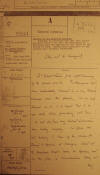
|
1.
17 August 1931.
Affairs of the Mosquito Indians,
Mr. Grant Wilson,
Guatemala, to British Foreign
Office, London, p. 1.
|
|

|
2.
17 August 1931.
Affairs of the Mosquito Indians,
Mr. Grant Wilson,
Guatemala, to British Foreign
Office, London, p. 2.
"MEMORANDUM ¶ The
Mosquito Coast. The first white
settlement in the Mosquito country was
made in 1630, when the agents of an
English chartered company occupied two
small cays and established friendly
relations with the Indians. From 1655 to
1850 Great Britain claimed a
protectorate over the Mosquito Indians;
but little success attended the various
endeavours to plant colonies and the
protectorate was disputed by Spain, the
Central American Republics and the
U.S.A. ¶ The opposition of the U.S.A.
was due very largely to the fear that
Great Britain would acquire a privileged
position in regard to the proposed
inter-oceanic canal. This aspect of the
question was, however, settled by the
Clayton-Bulwer treaty of 1850, according
to which both Powers pledged themselves
not to “occupy or fortify or colonise or
assume or exercise “any dominion
over…..the Mosquito Coast (or other
parts “of Central America)”. Moreover,
in 1860 Great Britain and Nicaragua
concluded the Treaty of Managua which
transferred to Nicaragua the suzerainty
over the entire Caribbean coast from
Cape Gracias a Dios to Greytown; but
granted autonomy to the Indians in the
more limited Mosquito Reserve. Under
Article 4 of this treaty it was,
however, stipulated, that nothing in the
treaty should be construed to prevent
the Mosquito Indians at any future time
from agreeing to absolute incorporation
into the Republic of Nicaragua. ¶ Later
a number of disputes arose as to the
true interpretation of the Treaty of
Managua and in 1879 these questions were
submitted for arbitration to the Emperor
of Austria. His award affirmed that the
suzerainty of Nicaragua over the Indians
was . . . / [...]"
|
|
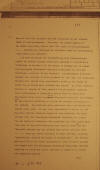
|
3.
17 August 1931.
Affairs of the Mosquito Indians,
Mr. Grant Wilson,
Guatemala, to British Foreign
Office, London, p. 3.
"[...] was not
full and unlimited but was restrained by
the Indians’ right of self-government.
Moreover, the report annexed to the
award explicitly stated that “the right
of self-government “…..undoubtedly
comprises the exclusive right of
self-taxation “both direct and
indirect”. ¶ In 1894 petitions for
incorporation into Nicaragua were signed
by certain Indians which were intended
to constitute a fulfillment of Article 4
of the Treaty of Managua and in August
the Nicaraguan Government thereupon
proclaimed the Mosquito Territory a
province of the Republic. H.M.
Government protested against the
validity of this procedure at the time,
and subsequent reports have thrown very
considerable doubt on the manner in
which the petitions were obtained and
signed. In order, however, finally to
dispose of this question H.M. Government
expressed their willingness to conclude
a treaty with the Nicaraguan Government
which would recognize Nicaragua’s
absolute sovereignty over the Mosquito
Territory in return for certain
concessions to the Indians. Negotiations
were protracted and a treaty was not
signed until 1905. It was found
impossible to secure for the Mosquito
Indians complete exemption from
taxation; but under Article 3(a) the
Nicaraguan Government undertook “to
submit “to the National Assembly a law
exempting for fifty years from the date
of the ratification of this treaty
(1906)* all the Mosquito Indians and the
Creoles born before the year 1894
“…..from all direct taxation on their
persons, property, possessions, animals
and means of subsistence”. The Article
was specific in its terms expressly in
order to guard against the danger that
the Nicaraguan Government would make
indirect taxation so heavy and direct
taxation so light as to render the
exemption useless. The / ¶ *i.e. up till
1956 [...]"
|
|
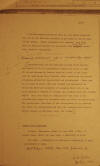
|
4.
17 August 1931.
Affairs of the Mosquito Indians,
Mr. Grant Wilson,
Guatemala, to British Foreign
Office, London, p. 4.
"[...] The
Nicaraguan Government have in fact never
submitted the law to the National
Assembly as provided in Article 3(a) of
the treaty. Their contention is,
however, that they will in practice
observe the procedure that such a law
would have rendered obligatory.¶ …………….
¶ Unfortunately for the Mosquito Indians
their Reserve has proved to be of
considerable commercial value so that it
is now overrun by traders from all parts
of the world and the land where they
formerly lived unmolested has become a
hunting ground for speculators and
adventurers. There can be no doubt
whatever that the Indians are themselves
in every way entirely incapable of
managing their own or any other people’s
affairs if brought into contact with the
outside world. As a race they are
useless for hard work or for soldiers
and cannot be entrusted with the least
responsibility. The rulers must
therefore be the Nicaraguans or the
traders and there is every probability
that the Indians would have a better
chance of existence under the former.
…))))….¶ Papers for reference: Printed
memoranda (6486) of June 1894: (7765) of
August 1902: (8617) of June 1905: A
2530/12/8 of 1928. ¶ See also: A
3135/12/8 of 1928 and A 2049/496/8 of
1929, A 496/496/8 of 1929. ¶ State
paper: Vol. 98 1904. 1905 pages 69-71. ¶
H. A. Caccia, April 30, 1930."
|
|
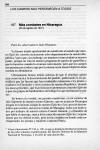
|
20 August
1931.
Para los observadores Indo-Hispanos,
Gen. Augusto C.
Sandino, Cuartel General del
EDSNN, p. 1.
(Source:
A. C. Sandino, El pensamiento vivo,
vol. 2, p. 194) "Ya
hemos tenido oportunidad de manifestar
al mundo que nuestro Ejército controla
tácticamente ocho departamentos de
nuestra República, ..."
|
|
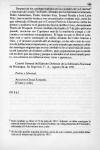
|
20 August
1931.
Para los observadores Indo-Hispanos,
Gen. Augusto C.
Sandino, Cuartel General del
EDSNN, p. 2.
(Source:
A. C. Sandino, El pensamiento vivo,
vol. 2, p. 195) " ...
entre los [combates] que sobresale el
librado por el Coronel Perfecto
Chavarría contra los piratas y traidores
en el puertecito fluvial del Río Coco,
denominado Puerto de Waspuck. En
ese combate efectuado el 17 de julio
próximo pasado, murieron seis Capitanes
más de la marinería yanqui y cincuenta y
un traidores nicaragüenses. El
lugar en que se libró el combate está a
varios centenares de millas distante del
Cabo Gracias a Dios, y el desastre
ocurrido allí al enemigo, no ha sido de
vecinos de poblaciones importantes y no
sería extraño que nuestros cobardes
enemigos negasen que en ese combate se
les avanzó más de sesenta mil cartuchos
de distintos calibres, pues seguramente
que no tardarán en decir que las armas y
parque avanzados en el mencionado
puerto, nos entraron en embarcaciones
rusas or japonesas. ..."
|
|

|
20 August
1931.
Agreement between
Manuel C. y Bordas, Puerto
Cabezas, and Gen. C. B. Matthews, Jefe
Director GN, Managua.
"Puerto Cabezas,
Nic.¶ 20 August 1931 ¶ The Jefe Director
Guardia Nacional de Nicaragua ¶ Managua,
Nicaragua. ¶ Sir: ¶ I hereby agree to
furnish the following: ¶ (a) Housing
facilities for personnel and equipment
of Guardia Detachment to be placed in
Kisalaya on the Coco River. ¶ (b)
Transportation from Cabo Gracias to
Kisalaya, of Detachment with their
equipment and supplies. ¶ (c)
Transportation as required for equipment
and supplies for Upkeep of Detachment,
from Cabo Gracias to Kisalaya. ¶ (d)
Transportation as required from Cabo
Gracias to Kisalaya and from Kisalaya to
Cabo Gracias, of personnel as the
occasion arises for any changes in same
to be made. ¶ The above provisions to be
complied with without cost to the
Nicaraguan Government. ¶ (a seal) ¶
(signed) Manuel C. y. Bordas ¶
Witnesseth ¶ (signed) C. A. INMAN ¶
Captain Guardia Nacional."
|
|
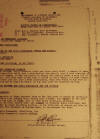
|
22 August
1931.
Monthly Report of Intelligence,
1st Sgt. Victor
Perera, N.C.O. in charge of
Neptune Mine, to Dept. & Area Commanders
Capt. A. O. Inman & Col. C. A. Wynn.
"DEPARTMENT OF
NORTHERN BLUEFIELDS ¶ GUARDIA NACIONAL
DE NICARAGUA ¶ NEPTUNE MINE NICARAGUA.
AUGUST 22nd, 1931. MONTHLY REPORT OF
INTELLIGENCE. ¶ FROM: July 24th, TO
August 22nd, 1931. ¶ From: N.C.O.
Neptune Mine Nicaragua. ¶ To: The Area
Commander, Bluefields Nic. ¶ To: Dept
Commander, Puerto Cabezas Nic. ¶ OF
TERRITORY OCCUPIED: inhabitant engage in
labour. ¶ ECONOMIC CONDITIONS: (---)
ATTITUDE OF THE CIVIL POPULATION TOWARD
THE GUARDIA: Favorable. (---) OPERATION:
(---)(---) SITUATION, IF ANY EXIST.
MILITARY OPERATION GUARDIA: (---)
routine, daily extended order and close
order drill, & manual of arms, (---)
inspection daily, once a week Machine
Gun school. Once a week training of
Civil Guard, it was considered to trains
the civicos twice a week but if (---),
they won’t have enough time to attend on
their works, for that reason civicos
just get once a week instruction, they
does works at day time in (---) and at
night do Guard, at day time just the
Guardias on duty. (---) THE GUARDIA
BETWEEN THE CIVIL POPULATION AND: (---)
MISCELLANEOUS: ¶ (The ) inspector at
Tunky reported that on the 18th, date of
August at 12:00 p.m. (---) captured four
Indians while broken into a store, the
capture of the four (---) was made at
Tunky, more or less about 12:00 p.m.
midnight. (patrol) of Civil Guards under
the command of Corporal Simon Cleveland,
are (---) far as Tunky escorting
bullion, on the 23th, date of August,
and also to (---) the four prisoner at
Neptune Mine, to investigate the case. ¶
Area Commander, Bluefields, Nic ¶ Dept
Commander, Puerto Cabezas. ¶ (signed)
Victor Perera ¶ 1st Sergeant G.N. ¶
N.C.O. In charge Neptune Detach."
|
|
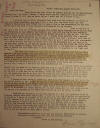
|
23 August
1931.
Letter from David
Haglund, Bilwi, to Dr. S. H.
Gapp, Moravian Church, Bethlehem PA, p.
1.
"Bilwi,
Nicaragua, August 23rd, 1931. ¶ Dear
Bro. Gapp:- ¶ Many thanks for your
letter of recent date. As now the days’
service, are ever and I am alone I
thought I would write you, for planning
as I do, to make a longer journey, it
will take me weeks before I could get
off a letter to you. ¶ I arrived here in
Bilwi Wednesday last week with the
intention of trying to work the Wanks
district from here. I took a trip with
the fruit train into the Company’s
plantations last Friday just to have a
look on the undertaking, but the Lord
was (with) me and I was able to make
valuable arrangements for my journey. ¶
Near to the end of the line I met with
one of our Indian helpers from
BilwasKarma Congregation. He told me
that our Evangelis at said station was
expected any time with his family, they
evidently being afraid to stay alone so
long, we not having returned to them as
yet. I at once hired a young Indian
Christian to walk over to BilwasKarma
Saturday with a message from me that I
was coming and the Ev. Family should
stay till I arrived. I told them on
which day and where to meet me with a
horse etc. I am glad I could make that
arrangement, for now my arrival has been
announced there and the Christians will
all meet me in the new large Church on
the coming Sunday and we will then
celebrate the Lord’s Supper and I will
proceed to Wasla. From Wasla to Anres,
then to Old Cape, then to Sandy Bay,
then to Dakura and from there back to
Bilwi which will be sometime in the
first part of Oct. D.V. ¶ The time for a
visit of this sort is the best possible
just now, for these reasons: the
Sandinistas have just been down in our
district, they got a beating from the
Guardia National near Sacklin and were
forced to retire up the river again. It
is therefore a chance for me NOW to go
there before they return again, which
might be in a couple of weeks. Secondly,
the time is just now when the
Congregations will be looking for the
Holy Communion. It will strengthen their
faith and confidence quite a bit, I
hope, if I can make the trip
successfully now. ¶ I left my family in
Bluefields chiefly for the sake of our
daughter, Svea. She goes to school
there. It is the first time in her life
she had a chance to attend a proper
school, she makes good progress, it
would not be fair to take her out of the
school there now. There is a school here
in Bilwi, but the discipline etc. is so
poor that we could not risk sending our
child to school here. I will rather try
to fight myself alone, at least until we
can see further what to do. ¶ I expect,
as said above, to leave from here this
week Tuesday and will be on the way
until middle of Oct. I know it will be a
very hard trip, for the Indians are
robbed so many times in the Wanks that
they have practically nothing to put
before a hungry Missionary. I cannot
bring too great supply with me, for I
have to travel partly on horseback and
travel swiftly too in some places. But
the Lord will provide for me and also
protect me. You shall hear from me as
soon as (I)return to Bilwi. ¶ Sometime
ago we, myself and my wife, applied to
S.P.G. for permission to go on furlough
leaving here after Easter 1932. I hope
our P.B. has forwarded our application
to you. If so I would be thankful if you
would let me know what S.P.G. has
decided or will decide. It is true it is
plenty of time till then, but we must
remember that we – hoping it will
granted to us to go home to Sweden- have
no place there owned by the Moravian
Church which welcomes us when we come,
but we have to try to get our friends to
find something cheap for us, and that
require sometimes time, for we would
naturally like to get a place near
Stockholm so that the boys could stay
with us and yet attend to their school
duties. ¶ Recommending myself to yours
and our friends’ remembrance in prayers
especially during this trip into the
infested district. ¶ I remain. ¶ Yours
in HIS service. [signed] David Haglund"
|
|
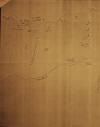
|
23 August
1931.
Letter from David
Haglund, Bilwi, to Dr. S. H.
Gapp, Moravian Church, Bethlehem PA,
with accompanying map, p. 2.
|
|
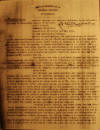
|
27 August
1931.
Letter from Gen.
Augusto C. Sandino, Cuartel
General del EDSNN, to Señor Coronel
Perfecto Chavarria, Campamentos
Militares del Río Coco, p. 1.
" ... ¶ Mi
muy queridisimo hermano: ¶
Motivo de mucho placer fue para
nosotros, el recibo de sus
importantisimas notas en que se sirvió
participarnos de los combates que con
las fuerzas a su mando libró contra el
enemigo el 17 de julio proximo pasado.
Con ese motivo, le hemos dado publicidad
a su triunfo tanto por la prensa, come
en un Boletín que periódicamente se
publica en nuestro Cuartel General y se
distribuye en todas nuestras autoridades
civiles y militares. Adjunto a la
presente me permito remitirle copia de
uno de los ejemplares de nuestro
Boletín. ¶ Sinembargo, con
todo y sentirnos alegres por los
triunfos alcanzados por nuestro Ejército
en los diferentes sectores de nuestra
República, también nos sentimos triztes
y conmovidos por la desaparición de los
hermanos Francisco Centeno y Teofilo
Fajardo, quiénes según sus notas,
fallecierón a consecuencia de fiebre, lo
que altamente hemos sentido. ¶
Ahora bién: ¶ Por informes
que hemos recibido del General Salgado,
sabemos que la mayor parte de nuestros
muchachos que salieron con Usted de éste
Cuartel General, se encuentran mal de
salud. En esa virtud, no hemos querido
aglomerar más gente de estos lados en el
Rio Coco, y con ese motivo hemos
dispuesto enviar con estas notas, al
hermano General Simón González, para que
se sirva Usted interrogar a los
muchachos de tropa que le acompañan, y
que si entre ellos hay quiénes se
quieran regresar, en ese caso procederá
de acuerdo con el General González y el
Coronel Rivera, a organizar una comisión
de civiles quiénes trepen a nuestros
muchachos, hasta Wuiwuilí, y que de allí
se conduzcan por la cordillera conocida
hasta éste Cuartel General, en donde se
les atenderá y se les proporcionarán los
medios de que bajen sin ningún peligro
hasta sus propios lugares. ¶
También podria suceder, que Usted mismo
tuviesa deseos de regresar, y en ese
virtud, se servirá Ud entregar las armas
y la gente al hermano General Simon
González, puediendo traer Usted y los
que le acompañan sus correspondientes
pistolas, pues las armas que entregarian
al General González, serian solamente
los rifles, bombas y la ametralladora.
¶ Esta última suposicion que le
hago, es porque talvez Usted estuviese
enfermo y no sería correcto que por pena
se dejase morir de calenturas en ese
lugar. Pués Ud sabe que yo le
estimo a Ud, con ..."
|
|
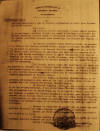
|
27 August
1931.
Letter from Gen.
Augusto C. Sandino, Cuartel
General del EDSNN, to Señor Coronel
Perfecto Chavarria, Campamentos
Militares del Rio Coco, p. 2.
"... toda
sinceridad y que ya tendria oportunidad
de darle otra Columna por estos lugares.
¶ Otro caso: ¶ Si
Usted se siente satisfecho y desea
seguir operando en ese lugar, entonces
siempre se pondrá Usted bajo las órdenes
del General González, y desde luego le
reconocerá como Jefe inmediato para que
juntos continuen operando pero Usted
bajo las ordenes del General González.
¶ El General Gonzalez lleva
instrucciones, de ponerse a las ordenes
del Coronel Abrahám Rivera, aunque el
Coronel Abrahám Rivera, es menor en
gerarquia a General González pero sucede
que el Coronel Rivera tiene entronquez
de amistades con importantes personas de
la Costa y por fuerza tendrá que llevar
la parte diplomática y el General
González con Usted, llevarán la accion
de armas, pero si Usted se regresa
entonces la llevará solamente el General
González con los demas Jefes que alli le
acompañan. ¶ El Coronel
Rivera tiene más facilidades que nadie
para ponerse en contacto con el General
Adolfo Cockburn y convenir con aquel
mencionado hermano en alguna accion
conjunta. Además, si todavia no
les ha sido posible ponerse en contacto
rápido con el General Cockburn lo
conseguirá seguramente el Coronel
Rivera. ¶ Por todo lo dicho,
el Coronel Abrahám Rivera, me representa
oficialmente sobre todo el Rio Coco, y
por lo mismo Ustedes se pondrán bajo las
ordenes del Coronel Abrahám Rivera.
¶ El General González tendrá que
dar a Usted el trabajo de las
correspondencias, y las solicitudes,
recibos y ordenes, deberán de hacerlas
bajo el mismo orden que se le indicó a
Usted, nada más que firmando a nombre
del General González y de Usted, pero
siempre de acuerdo con el Coronel Rivera
en el Rio, pero si llegan hasta
Prinzapolka, u otras partes, ya para
entonces se sentirán bajo las ordenes
del General Cockburn o de Ustedes mismos
si el General Cockburn no está por
aquellos contornos. ¶
Tenemos la seguridad de recibir muy en
breve una gran cantidad de parque que
hemos comprado recientemente en
Honduras. ¶ Espero que Usted
sabrá cumplir con estas instrucciones a
pié de la letra. ¶ Sírvase
recibir un abrazo fraternal en unión de
todos nuestros queridos hermanos que
allí le rodean. ¶
Patria y Libertad ..."
(Source:
NA127/38/30, original document on EDSN
stationary with signature over seal,
captured by Lt. Gray, Biltigne River, 3
Feb. 1932)
|
|
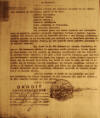
|
28 August
1931.
Letter from Gen.
Augusto C. Sandino, Cuartel
General del EDSNN, to Captains Francisco
Ellis, Ricardo Obando & Humberto
Rodríguez, Costa Atlantica de Nicaragua,
p. 1.
"Cuartel General
del EDSNN, Agosto 28 de 1931. ¶
Señores Capitanes, ¶
Francisco Ellis, ¶ Ricardo
Obando y ¶ Humberto
Rodríguez. ¶ Costa Atlántica
de Nicaragua. ¶ mis queridos
hermanos: ¶ Con profundo
pesar nos hemos impuesto del
fallecimiento de nuestros queridos
hermanos Francisco Centeno y Teofilo
Fajardo, quiénes con Ustedes bajarón en
comisión militar a ese Litoral
Atlántico. También supimos de la
herida leve que recibió en la clavícula
derecha el hermano Capitán Ricardo
Obando, lo que también hemos sentido
altamente en nuestro corazón. ¶
Hoy mismo se le dán órdenes al Coronel
Chavarría, de que si los hermanos
quiénes lo acompañan están enfermos o
tienen deseos de regresarse, que les
permita al regreso, mandándolos con una
comisión de civiles hasta Wuiwuilí y de
allí a éste Cuartel General, para que
salgan debidamente custodianos hasta los
lugares en donde viven.
Seguramente que el Coronel Chavarria,
les habrá de leer la nota que hoy se le
remite con el hermano General González.
El General González, Coronel Rivera y el
Coronel Chavarría, serán los Jefes del
Rio Coco, pero si el Coronel Chavarria
quiere regresar, sólamente quedarán el
General González y el Coronel Rivera.
¶ Reciban Ustedes en unión de los
hermanos que allí les acompañan, un
abrazo fraternal de los hermanos que
aquí me rodean y de éste vuestro hermano
que les estima. Patria y Libertad /s/ A.
C. Sandino"
(Source:
NA127/38/30, original document on EDSN
stationary with signature over seal,
captured by Lt. Gray, Biltigne River, 3
Feb. 1932)
|
|
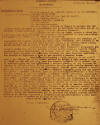
|
30 August
1931.
Letter from Gen.
Augusto C. Sandino, Cuartel
General del EDSNN, Señores Alcaldes de
San Juan de Segovia Capitán Timoteo
Garcia y Teniente Faustino González, Sus
campamento.
"Mis
queridos hermanos: ¶ Con
esta fecha, tuvimos el placer de recibir
sus muy atentas notas, asi como las
provisiones que sirvieron enviarnos con
el hermano Capitan Heriberto Reyes.
Gracias queridos hermanos. ¶
Las noticias que nos dan de Jesús
Barreto y otros individuos, hoy mismo se
ordena la captura y fusilamiento de esos
miserables traidores a la Patria y a su
clase de campesinos. ¶
Quedamos atendidos del acercamiento del
enemigo, al Campamento del hermano Juez
de la Mesta Félix Hernández, pero
tenemos la esperanza, de que el General
Pedro Antonio Irias, y el Coronel Reyes
López, sabrán cumplir con su deber y
darán un copeteada al enemigo. ¶
Oportunamente entrará a éste Campamento
procedente del Litoral Atlántico,
nuestro hermano General Carlos Salgado,
también vendrá procedente de 'La
Constancia' el hermano General Juan
Pablo Umanzor, quienés en breve treparán
con poderosas Columnas por esos lugares,
barriendo con escobas de bayonetas a
todo lo que estorbe a nuestra causa.
¶ Ruegole manifestarme a Tomás
Duarte, de que recibí nota y que espero
que en mi nombre enviará un saludo a
Doña Aurora y que le digan que por más
que ella crea que nuestro Ejército no la
quiere, que al contrario, y que por
mucho que queremos a nuestro pueblo, es
que tratamos de imponer es respeto
dentro de las personas que por miedo
podrian hacerle un mal a la causa de la
Libertad de Nicaragua. También puede
decirle a Tomás, que por el conducto de
Ustedes le aceptamos cualquier cosa con
que quieran ayudar a nuestro Ejército,
para lo que serviran Ustedes remitir a
este Cuartel General lo que Doña Aurora
o Tomasito quiera enviarnos,
principalmente cartas. Pronto
escribiré a Doña Aurora, de quien no
olvidamos que por ayudar a nuestro
Ejército, principió a perder sus
intereses; le escribiré a Doña Aurora,
remitiéndole copia de unos RAZGOS
BIOGRAFICOS DE LA VIDA DE NUESTRO
INOLVIDABLE GENERAL ORTHEZ DURANTE EL
TIEMPO QUE PRESTO SUS SERVICIOS A
NUESTRO EJERCITO HASTA QUE MURIO.
Está en nuestro poder la fotografía de
un niñito César Augusto Toledo, hijo del
General Orthéz, lo que se encontró en
los documentos, pero no sabemos el
nombre de la mamá que según nos dijo el
mismo General Orthéz, era ocotaleana y
que el niño habia muerto a causa de
envenamiento que le hicieron los mismos
piratas acantonados en el Ocotal,
rogamosele a Ustedes señores Alcaldes
preguntar a Doña Aurora, que si sabe el
nombre de la mamá de ese niño. ¶
Sinceramente vuestro hermano. ¶
Patria y Libertad /s/
[orig doc w/
seal. TRU. 201/35. Also in AB: 217-218.
Engl trans in 38/30.]
|
|
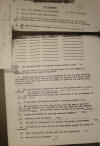
|
31 August
1931.
Inspection Report, Puerto Cabezas Jail,
no author.
"POST EXCHANGE ¶
1. Has a post exchange been established?
No Post Exchange. ¶ 2. Is C.O. 60/28,
being complied with? ¶ 3. Did the value
of the stores on hand and the total of
the cash on hand and counted agree with
the total value of goods or cash to be
accounted for? ¶ 4. The value of the
post exchange on the day of the
inspection was C$__________. (----)
(----) ¶ 2. Is a Registry Book of
Prisoners being carefully kept? Yes ¶ 3.
Did the number of prisoners counted
agree with the number of prisoners shown
by the Registry Book? Yes. ¶ 4. Check
prisoners daily ration statements for
the ten days preceding the inspection
and report whether the number of
prisoners for which ration credit has
been taken agrees with the number as
shown by the Register Book as being
confined. ¶ 5. Were any prisoners having
more than six (6) months or more to
serve confined? One Guardia serving
seven years for murder ---to be
transferred to Bluefields. ¶ 6. Are the
Guardia at the cárceles (jails) well
instructed in the performance of their
duty? Yes. ¶ 7. Is the number of
sentries adequate to prevent escapes?
Yes. ¶ 8. When prisoners are taken out
of the cárcel for work or any other
reason are they checked “out” and “in”
as they are taken from and returned to
the prison? Yes. Are prisoners worked
outside of the prison? Yes. ¶ 9. Are the
facilities for policing prisoners
adequate? Yes. ¶ 10. How many cells are
there? Four. ¶ 11. Are they so
constructed as to prevent the escape of
prisoners? Yes. ¶ 12. If there are no
cells is the building secure against the
escape of prisoners? ¶ 13. Have any
prisoners escaped since the last
inspection? No. ¶ 14 Are prisoners
uniformed? No."
|
|
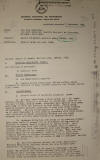
|
7 September
1931.
Record of Events, Eastern Area, August
1931, Col. C. A.
Wynn, Bluefields, to the Jefe
Director GN, Managua, p. 1.
|
|
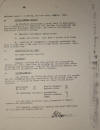
|
7 September
1931.
Record of Events, Eastern Area, August
1931, Col. C. A.
Wynn, Bluefields, to the Jefe
Director GN, Managua, p. 2.
|
|
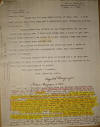
|
8 September
1931.
Letter from
Elizabeth Bregenzer,
Winston-Salem NC, to Dr. S. H. Gapp,
Moravian Church, Bethlehem PA.
"Dear Br. Gapp: ¶
Thanks you for your kind letter of Sept.
4th. I know that you are kept very busy
and I appreciate your taking the trouble
to write me. ¶ Bishop Pfohl has written
to the Congressman but has not heard
from him as yet. I have been doing what
I cold to get this matter under way and
I am sorry it is not further along but
trust it will move ahead more quickly
now. ¶ Will write to Watertown now about
the home I spoke of but will make no
definite arrangements until this
citizenship matter is settled. ¶ The
Lord Himself will give us wisdom and I
am only anxious that we shall be found
entirely in His will in whatever we do.
Thanks you for upholding us in prayer. ¶
With kind regards, I remain,¶ Very
sincerely yours, [signed] Elizabeth
Bregenzer ¶ P.S. Last week I received a
package from our Musawas Christians
containing our “Guest book” and a
quantity of negatives picked up in the
“bush”. Some of the negatives were
spoiled and surely it was by God’s grace
that the spoiled ones were unimportant
while about 215 good ones were of
Musawas pictures, some of which I had
never seen except as negatives. There
were letters from several of our people,
latest date July 18th, and they were
still in hiding and they wrote: “Our
trouble is getting greater. Our lives
are in danger, the Spaniards want to
kill us for the shelter and guidance
which we gave you. Our own people have
turned against us, in envy and hatred,
but we are still happy in the Lord. He
is our hope and joy and we look for His
coming. They cannot kill our soul. Our
trust is in the Lord Jesus Christ. Pray
for us.” Also had a Spanish letter from
the young man from the Neptune Mine who
found his Saviour while he was helping
Br. Bregenzer putting up our new house.
He writes: “Have distributed all the
Spanish literature which you had sent
me. The people would be glad to have
more. If you can send me more I will be
glad to give it out.” He speaks further
of his “good friend the Rev. Karl,
through whom I found salvation in our
Lord Jesus Christ” but I can’t give you
a true translation until I study up my
Spanish. E. B."
|
|
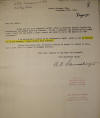
|
11 September
1931.
Letter from A. O.
Danneberger, Puerto Cabezas, to
Dr. S. H. Gapp, Moravian Church,
Bethlehem PA.
[NOTE: The
referenced eyewitness account by a Sumu
Indian from Musuwas of Bro. Bregenzer's
killing by the EDSN is included here
under the date 31 March 1931.
See also the commentary on this report
by Br. Bregenzer's widow Elizabeth
Bregenzer, included under 10
November 1931.]
"Dear Br. Gapp:-- ¶ Thank you for your
cheering letter which I received shortly
before Mrs. Danneberger and myself left
for Tuburus. We had a pleasant and
exceptionally quick trip. I will try and
write a short report and send it on to
the Editor of “The Moravian”. ¶ I am
enclosing a report of Br. Bregenzer’s
death given to me in Tuburus by an eye
witness, a Sumu Indian from Musawas.
Pardon the short note. Tomorrow morning
we expect to return to Yulu, and I have
still to attend to various matters. ¶
With best regards to Mrs. Gapp and
yourself, ¶ Very sincerely yours, ¶
[signed ] A.O. Danneberger"
|
|
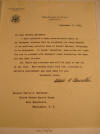
|
11 September
1931.
Letter from W. A.
Thurston, British Foreign Office,
to Gen. C. B. Matthews, Managua.
"Department of
State ¶ September 11, 1931. ¶ My dear
General Matthews: ¶ I have received a
reply from Minister Hanna to my
telegram, stating that he considers the
establishment of an auxiliary aviation
base at Puerto Cabezas, Nicaragua, to be
desirable. It would, therefore, seem
quite all right for you to proceed with
whatever plans concerning the base you
may have in mind. Mr. White has returned
and will be glad to see you at any time.
Next Monday would suit him, although no
definite appointment has been made for
you. ¶ Sincerely yours, ¶ (signed)
William C. Thurston ¶ General Calvin B.
Matthews, ¶ United States Marine Corps,
¶ Navy Department, ¶ Washington, D. C."
|
|
|
|
|
PREVIOUS
NEXT |
|
|
|
|
|
|
|

